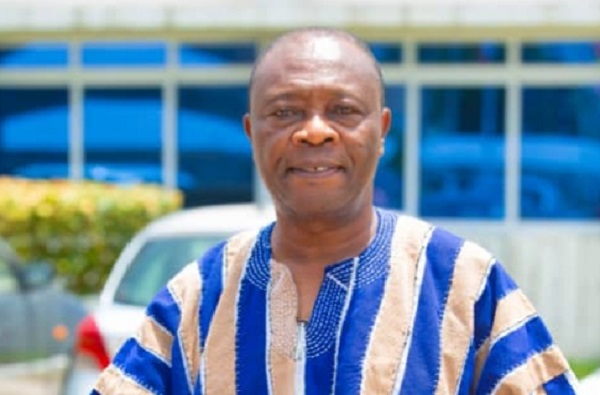Colour or nature of school uniforms insignificant in rebranding public basic education – Prof. K.T Oduro
Colour or nature of school uniforms insignificant in rebranding public basic education – Prof. K.T Oduro GhanaWeb


A Comparative Analysis of School Uniforms in Ghana

Introduction
In Ghana, the imagery of basic public schools is often negatively affected by various factors. One such factor is the color or nature of school uniforms worn by students. However, it is important to question whether the uniforms are the primary reason for the poor performances in literacy and numeracy in public schools compared to private schools. This report aims to analyze the impact of school uniforms on educational outcomes and discuss the need for prioritizing other factors that contribute to the performance gap between public and private schools.
Competitor Analysis and Rebranding Agenda
The Ministry of Education in Ghana has recently prioritized school uniforms as part of its rebranding agenda. However, it is crucial to determine whether this decision was informed by competitor analysis. By analyzing the factors that contribute to the higher performance of private basic schools and the lower performance of public basic schools, a more effective rebranding strategy could have been developed. The Ministry’s focus on school uniforms may not address the root causes of the performance gap.
“I wonder if the Ministry of Education’s decision to prioritize school uniforms in its rebranding agenda was informed by competitor analysis to determine factors that contribute to the higher performance of private basic schools against the lower performance of public basic schools in the country. If the Ministry had paid attention to competitor analysis, it would not have placed primacy on school uniforms,” said Prof. G.K.T. Oduro, a Professor of Educational Leadership at the Institute for Educational Planning and Administration (IEPA) at the University of Cape Coast.
Stakeholder Concerns
Prof. Oduro emphasizes the importance of addressing stakeholder concerns that affect the image of public schools in Ghana. These concerns include over 8,000 primary schools operating under trees, late release of capitation and feeding grants, insufficient infrastructure, inadequate textbooks, inadequate teaching and learning resources (TLRs), lack of support for children with learning difficulties, inadequately equipped ICT laboratories, and more. By prioritizing these concerns, the Ministry of Education can improve the overall image of public schools.
“It would have prioritized any of the stakeholder concerns relating to the over 8,000 primary schools operating under trees, the late release of capitation and feeding grants, insufficient infrastructure, inadequate textbooks, inadequate teaching & learning resources (TLRs), little or no support for children with learning difficulties, inadequately equipped ICT laboratories, and many others that tend to affect the image of public schools in the country,” added Prof. Oduro.
Budgetary Allocation and Policy Challenges
Prof. Oduro raises concerns about the minimal budgetary allocation for public basic education in Ghana. According to available statistics, only 4% of the education budget was committed to primary education in 2023. This low allocation hinders the provision of necessary resources for quality teaching and learning in public schools. Regardless of the attractiveness of new school uniforms, the lack of essential human and material resources will continue to be a policy challenge for basic public education.
Rethinking Prioritization
Prof. Oduro urges the Ministry of Education to reconsider its prioritization of new school uniforms for public basic education. Without addressing the underlying issues and providing adequate support, the focus on uniforms may only serve as a symbolic gesture rather than a meaningful rebranding agenda.
“Without rethinking the initiative, the motivation will be more of a legacy than a rebranding agenda,” concluded Prof. Oduro.
SDGs, Targets, and Indicators
| SDGs | Targets | Indicators |
|---|---|---|
| SDG 4: Quality Education | 4.1 By 2030, ensure that all girls and boys complete free, equitable and quality primary and secondary education leading to relevant and effective learning outcomes | – Literacy and numeracy performance of public basic schools compared to private basic schools – Factors contributing to the higher performance of private basic schools – Stakeholder concerns relating to primary schools operating under trees, late release of capitation and feeding grants, insufficient infrastructure, inadequate textbooks, inadequate teaching & learning resources (TLRs), little or no support for children with learning difficulties, inadequately equipped ICT laboratories |
| SDG 4: Quality Education | 4.2 By 2030, ensure that all girls and boys have access to quality early childhood development, care and pre-primary education so that they are ready for primary education | – Availability and quality of early childhood development programs in public basic schools |
| SDG 4: Quality Education | 4.5 By 2030, eliminate gender disparities in education and ensure equal access to all levels of education and vocational training for the vulnerable, including persons with disabilities, indigenous peoples and children in vulnerable situations | – Gender disparities in access to education in public basic schools |
| SDG 4: Quality Education | 4.a Build and upgrade education facilities that are child, disability and gender sensitive and provide safe, non-violent, inclusive and effective learning environments for all | – Availability and quality of infrastructure in public basic schools |
| SDG 4: Quality Education | 4.b By 2020, substantially expand globally the number of scholarships available to developing countries, in particular least developed countries, small island developing States and African countries, for enrolment in higher education, including vocational training and information and communications technology, technical, engineering and scientific programmes, in developed countries and other developing countries | – Availability of scholarships for students in public basic schools |
| SDG 4: Quality Education | 4.c By 2030, substantially increase the supply of qualified teachers, including through international cooperation for teacher training in developing countries, especially least developed countries and small island developing States | – Availability of qualified teachers in public basic schools |
| SDG 17: Partnerships for the Goals | 17.9 Enhance international support for implementing effective and targeted capacity-building in developing countries to support national plans to implement all the Sustainable Development Goals, including through North-South, South-South and triangular cooperation | – International support for capacity-building in the education sector in Ghana |
Copyright: Dive into this article, curated with care by SDG Investors Inc. Our advanced AI technology searches through vast amounts of data to spotlight how we are all moving forward with the Sustainable Development Goals. While we own the rights to this content, we invite you to share it to help spread knowledge and spark action on the SDGs.
Fuente: ghanaweb.com

Join us, as fellow seekers of change, on a transformative journey at https://sdgtalks.ai/welcome, where you can become a member and actively contribute to shaping a brighter future.







